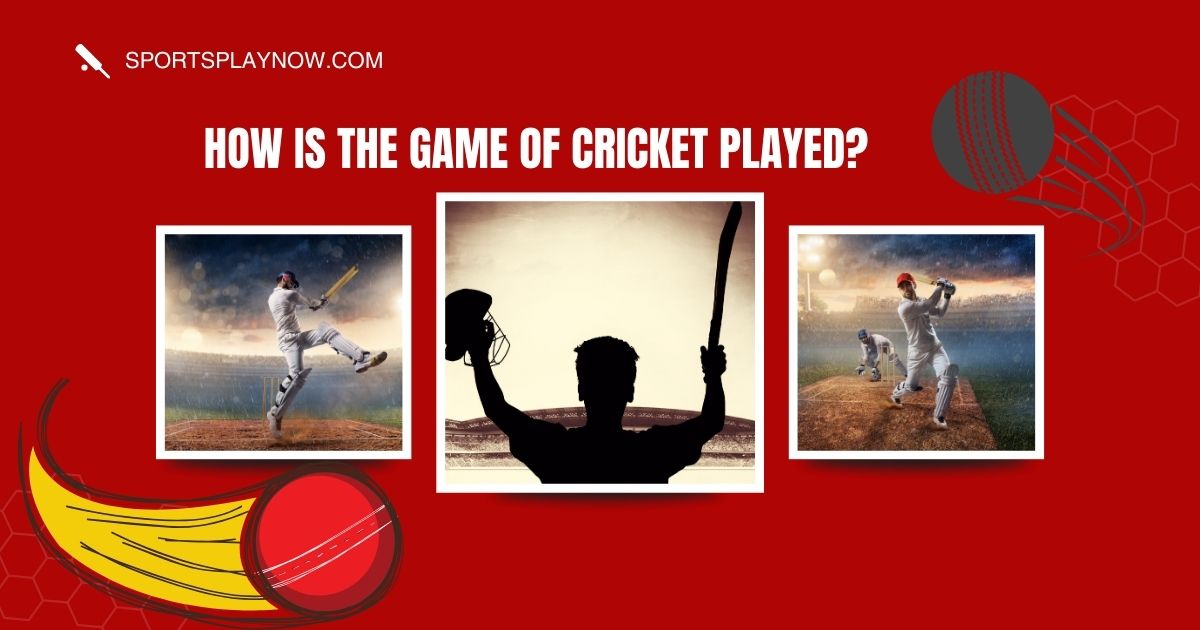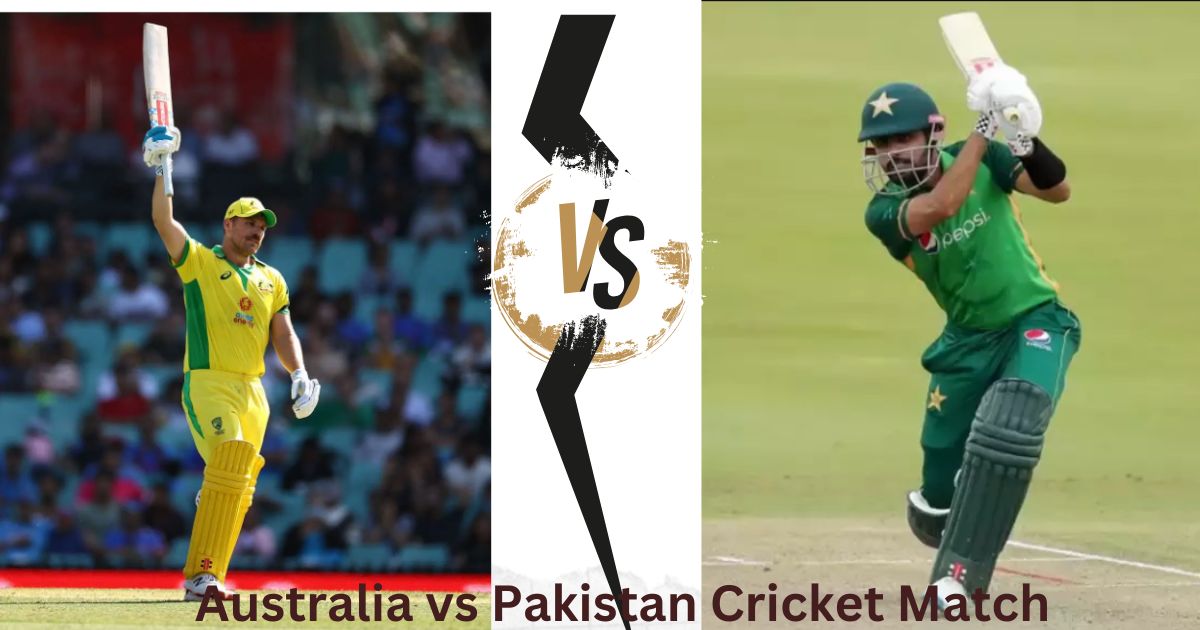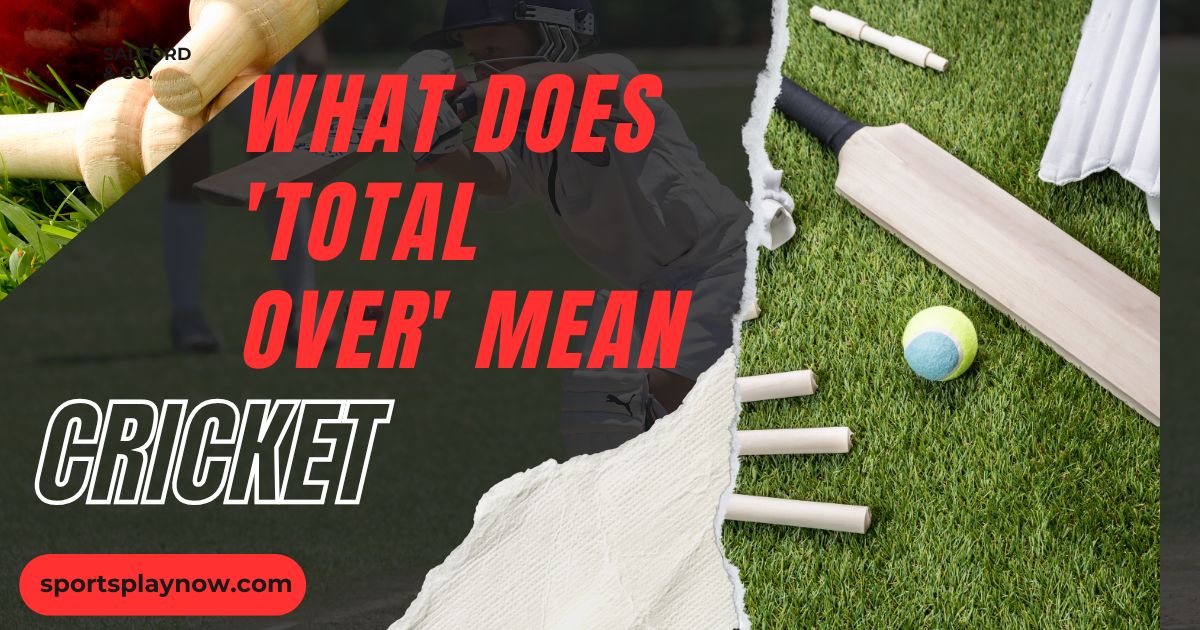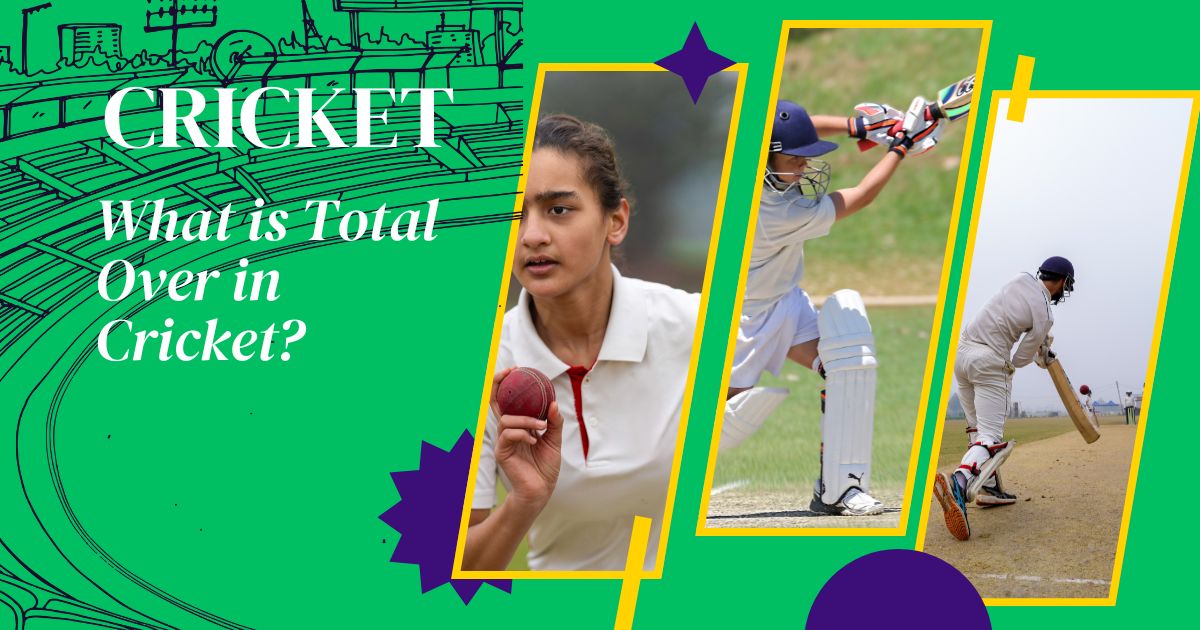How is the game of cricket played?: Cricket is a energetic bat-and-ball sport played between two teams, each comprising of eleven players. The game unfurls on an oval-shaped field, with a rectangular 22-yard pitch at its center.
One team bats, endeavoring to score runs by hitting the ball and running between two sets of wickets, whereas the contradicting group bowls and areas, endeavoring to constrain runs and reject players.
Matches can shift in arrange, from Test cricket, enduring up to five days, to the fast-paced Twenty20, which concludes in fair a few hours. This mix of strategy, ability, and cooperation makes cricket a captivating display delighted in by millions worldwide.
Key Takeaways
- Two Groups: Cricket includes two groups of eleven players each, contending to score runs.
- Batting and Bowling: One group bats to amass runs while different dishes to excuse hitters and cutoff scoring.
- Innings Design: Matches comprise of innings, with each group batting for a predetermined number of overs, shifting by match design.
- Scoring Runs: Runs are scored by running between wickets or hitting limits (4 or 6 runs).
- Excusals: Players can be excused in more ways than one, including being bowled, got, or run out.
- Handling Positions: Defenders are decisively positioned around the field to help the bowler and forestall runs.
- Match Arrangements: Cricket is played in different configurations, including Test matches, One Day Internationals, and Twenty20, each with extraordinary guidelines and spans.
- Technique and Strategies: Progress in cricket depends on essential navigation, including batting request, bowling changes, and field situations.
- Cooperation: Compelling correspondence and coordinated effort among players are critical for both batting and handling achievement.
- Worldwide Fame: Cricket is a broadly celebrated sport, encouraging a feeling of local area and public pride across the globe.
What is Cricket?
How do you explain cricket?
Cricket is a group activity played between two groups of eleven players each. The game includes batting and bowling, with one group attempting to score runs by stirring things up around town and running between wickets, while the other group intends to excuse the players and cutoff their runs.
Played on a roundabout field with a 22-yard pitch at the middle, cricket has different configurations, including Test matches and restricted overs games. Its blend of technique, expertise, and collaboration makes it a dearest sport universally.
Why do we play cricket?
We play cricket because of multiple factors, including its capacity to advance cooperation, sportsmanship, and system. The game encourages social associations and local area commitment, offering a tomfoolery and serious outlet.
Furthermore, cricket gives an open door to actual wellness and expertise improvement, while likewise being a wellspring of diversion and enthusiasm for millions all over the planet.
Importance of Cricket Worldwide
Cricket holds critical significance overall as a significant game that joins different societies and networks. It fills in as a stage for worldwide contest, encouraging public pride and solidarity.
The game adds to economies through the travel industry and occasions, while additionally advancing qualities like cooperation and discipline. Furthermore, cricket rouses millions, especially in nations like India, Australia, and Britain, making it a critical part of social character and social legacy.
What is the history of cricket?
The historical backdrop of cricket traces all the way back to the late sixteenth hundred years in Britain, where it advanced from different bat-and-ball games. By the seventeenth 100 years, it acquired ubiquity among provincial networks, prompting the foundation of formal principles and the main kept match in 1697.
The eighteenth century saw the ascent of expert players and the development of the Marylebone Cricket Club (MCC) in 1787, which normalized the laws of the game.
Cricket spread around the world during the English Realm, with global matches arising in the late nineteenth 100 years. Today, it has changed into a significant game with a rich legacy and an enthusiastic following around the world.
Basics of the Game
The basics of cricket, explained
Cricket comprises of two groups of eleven players each, with the game played on a roundabout field and a 22-yard pitch at the middle. One group bats, planning to score runs by raising a ruckus around town and running between two arrangements of wickets, while the other group bowls and fields, attempting to excuse the players.
Matches can be played in different organizations, including Test cricket, which endures as long as five days, and restricted overs designs like One Day Internationals and Twenty20. Key components incorporate batting, bowling, handling, and the organized innings design, making cricket a key and connecting with sport.
How is cricket played?
Cricket is played between two groups of eleven players on a round field with a focal 22-yard pitch. One group bats, endeavoring to score runs by stirring things up around town and running between wickets, while different dishes and fields, intending to excuse the hitters.
An innings comprises of a set number of overs, and the group with the most runs toward the finish of the game dominates. The game consolidates components of procedure, expertise, and collaboration across different arrangements, including Test matches and restricted overs games.
What are the rules of cricket?
The principles of cricket are administered by the Laws of Cricket, which cover different parts of the game. Here are a few key guidelines:
- Groups and Players: Each group comprises of eleven players. A match can be played in various configurations, like Test, At some point, or Twenty20.
- Innings: Groups alternate to bat and bowl. An innings comprises of a predefined number of overs (six legitimate conveyances) or goes on until ten hitters are out.
- Scoring Runs: Runs are scored by players running between the wickets or hitting limits (4 runs assuming the ball arrives at the limit in the wake of skipping, 6 runs on the off chance that it crosses the limit without contacting the ground).
- Excusals: Players can be excused in different ways, including being bowled, got, leg before wicket (LBW), run out, and confused.
- Bowling: Bowlers should convey the ball with a straight arm and can’t exceed the wrinkle. Every bowler can dumbfound a limit of each in turn.
- Handling Positions: Groups place defenders decisively around the pitch to restrict runs and endeavor to get or excuse hitters.
- Umpires: Matches are managed by umpires who authorize the principles, settle on choices on excusals, and guarantee fair play.
- No-Balls and Wides: Certain conveyances, such as exceeding the wrinkle or conveying excessively high, can be called no-balls or wides, bringing about additional runs for the batting group.
- The Throw: Before the match, chiefs flip a coin to conclude which group bats or bowls first.
- Dominating the Game: The group with the most runs toward the finish of the game dominates. In certain configurations, a draw can happen in the event that time expires before an outcome is accomplished.
How many players are there in cricket?
In cricket, each group comprises of eleven players. Consequently, in a standard match, there are a sum of 22 players on the field.
Cricket Equipment
Cricket Bat and Ball
Cricket Bat
- Material: Normally produced using willow wood for its lightweight and tough properties.
- Shape: Level on one side with an articulated edge, permitting hitters to successfully strike the ball.
- Sizes: Bats come in different sizes to oblige various players, with choices for youngsters and grown-ups.
- Use: Hitters utilize the bat to raise a ruckus around town and score runs, with strategy assuming an essential part in compelling batting.
Cricket Ball
- Material: Made of stopper enclosed by layers of yarn, covered with calfskin, commonly red for Test matches and white for restricted overs designs.
- Weight: For the most part weighs somewhere in the range of 155.9 and 163 grams (5.5 to 5.75 ounces).
- Development: The ball has a crease that bowlers use to grasp and turn, impacting the ball’s direction.
- Utilization: Bowlers convey the ball to excuse players, and defenders use it to limit runs and endeavor gets.
Protective Gear
Defensive stuff in cricket is fundamental for player security and incorporates a few things:
- Cap: Worn by players and close defenders to shield the head and face from quick conveyances.
- Cushions: Leg cushions safeguard the shins and knees of players and wicketkeepers from influences.
- Gloves: Worn by players to safeguard the hands while grasping the bat, and by wicketkeepers for getting the ball.
- Stomach Watchman: Otherwise called a container, worn by male players to safeguard delicate regions.
- Chest Watchman: Gives extra security to the middle, particularly for players confronting quick bowlers.
- Thigh Cushions: Worn under the pants for added assurance against balls striking the thighs.
These things assist with limiting the gamble of injury during play, guaranteeing that players can perform securely and unhesitatingly.
The Cricket Field

The Cricket Field
The Toss and Its Significance
The throw is a urgent pre-match custom in cricket, where the skippers of the two groups flip a coin to figure out which group will bat or bowl first. Here’s the reason the throw is huge:
- Navigation: Winning the throw permits the chief to pick the batting or bowling side in light of pitch conditions, climate, and group qualities.
- Pitch Conditions: The state of the pitch can change after some time. Skippers frequently really like to bat first on a dry pitch that might break down, while they could bowl first on the off chance that the pitch is supposed to offer help to bowlers.
- Weather conditions Elements: In restricted overs designs, weather patterns can impact the choice. Groups might decide to bat first to set an objective or bowl first on the off chance that downpour is normal, as the DLS strategy can become an integral factor.
- Mental Benefit: Winning the throw can give a mental lift to the group, establishing an inspirational vibe for the match.
- System Execution: The throw permits skippers to carry out their game procedures successfully, adjusting their way to deal with the circumstances within reach.
Generally speaking, the throw assumes an essential part in molding the course of a cricket match, affecting technique and ongoing interaction all along.
Key Positions on the Field
1. Bowler
- Conveys the ball to the hitter, holding back nothing restricting runs.
2. Wicketkeeper
- Remains behind the wickets to get balls and execute stumpings or run-outs.
3. Slip Defenders
- Situated close to the wicketkeeper, they get edges off the bat from quick bowlers.
4. Gorge
- Situated near slip defenders, prepared to get balls that are edged however miss the mark.
5. Point
- Situated on the off side, this defender stops cuts and edges.
6. Cover
- Situated on the off side, answerable for halting drives and singles.
7. Mid-off and Mid-on
- Situated close to the bowler, these defenders keep runs from straight drives.
8. Square Leg
- Situated on the leg side, they stop shots played to the leg side.
9. Fine Leg
- Situated behind square on the leg side, frequently gets top edges.
10. Third Man
- Situated behind the hitter on the off side, getting edges that go behind.
11. Long-on and Long-off
- Situated on the limit, these defenders keep runs from hurled shots.
Roles of Players
In cricket, players play explicit parts that add to the group’s general presentation:
- Batsmen: Liable for scoring runs by batting. They should be talented in different procedures and shot choice.
- Bowlers: Plan to excuse players by conveying the ball. They utilize different bowling styles, including speed and twist, to outfox rivals.
- Wicketkeeper: Situated behind the stumps, the wicketkeeper gets conveyances, executes stumpings, and helps in run-outs.
- Defenders: Backing bowlers by halting runs and endeavoring to get or excuse hitters. They can be put in different positions in light of the methodology.
- All-rounders: Flexible players who can both bat and bowl actually, giving equilibrium to the group.
Every player’s job is crucial for both hostile and cautious systems, making cooperation fundamental for outcome in cricket.
Structure of an Innings
Bowling and Batting Techniques
- Quick Bowling: Includes speed and hostility, utilizing areas of strength for an up and conveyance step. Key sorts include:
- Inswing: The ball bends internal toward the player.
- Outswing: The ball gets away from the player.
- Crease Bowling: Using the crease position to make unusual development.
- Turn Bowling: More slow conveyances that depend on twist to mislead hitters. Key sorts include:
- Off-turn: Twists from off to leg for right-gave players.
- Leg-turn: Twists from leg to off, frequently more testing to play.
Batting Methods
- Position: The place of the hitter prior to confronting the ball, guaranteeing equilibrium and preparation.
- Grasp: Holding the bat appropriately to control shots and create power.
- Shot Determination: Picking suitable shots in view of the ball’s line and length, including:
- Cautious Shots: Safeguarding the wicket, similar to the forward guard.
- Going after Shots: Scoring runs, like drives, cuts, and pulls.
Types of Cricket Matches
Cricket matches can be characterized into a few sorts in light of the organization and rules. Here are the principal types:
1. Test Matches
- Design: Played more than five days, with each group batting two times (two innings).
- Term: Considers a more profound system and game turn of events.
Result: Can end in a success, misfortune, or draw.
2. One Day Internationals (ODIs)
Design: Each group faces a proper number of overs, normally 50.
Span: Normally goes on around 7-8 hours, including breaks.
Result: Groups plan to score the most runs inside their overs.
3. Twenty20 (T20)
- Design: Each group plays a limit of 20 overs.
- Term: Matches last around 3 hours, making it the most brief arrangement.
- Result: Quick moving and high-scoring, interesting to a wide crowd.
4. Five star Matches
- Design: Like Test coordinates however may not be worldwide. Played north of four days.
- Term: Groups have two innings, considering a draw or win.
5. List A Matches
- Design: One-day coordinates with changing over limits (commonly 40-50).
- Span: Like ODIs yet not generally played at the worldwide level.
6. Competitions and Associations
Different configurations, frequently integrating numerous groups, for example, the ICC Cricket World Cup, T20 associations, and homegrown contests.
How is the game of cricket played?
| Aspect | Description |
|---|---|
| Teams | Two teams, each consisting of eleven players. |
| Objective | One team bats to score runs while the other bowls and fields to restrict runs and dismiss batters. |
| Playing Field | A circular or oval field with a rectangular 22-yard pitch at the center. |
| Innings | Each team takes turns to bat and bowl. An innings consists of a fixed number of overs, depending on the match format (e.g., 20, 50, or 90 overs). |
| Batting | Batters score runs by hitting the ball and running between two sets of wickets. They can also score boundaries (4 or 6 runs). |
| Bowling | Bowlers deliver the ball to the batters, aiming for wickets or to limit runs. Each bowler can bowl a maximum of one over at a time. |
| Fielding | Fielders position themselves strategically around the field to catch the ball, stop runs, and support the bowler. |
| Dismissals | Batters can be dismissed in several ways, including being bowled, caught, LBW, run out, or stumped. |
| Winning the Match | The team with the most runs at the end of the match wins. In some formats, a draw can occur if time runs out. |
FAQ’S About How is the game of cricket played?
What are the basic rules of playing cricket?
Cricket is played between two groups of eleven players, with one group batting to score runs and the other bowling to confine runs and excuse hitters. Every innings comprises of a set number of overs, and the group with the most runs toward the end wins.
How does scoring work in cricket?
Runs are scored by players running between two wickets or by hitting limits — four runs assuming the ball skips prior to arriving at the limit, and six runs on the off chance that it crosses without contacting the ground.
What is the role of the bowler?
The bowler conveys the ball to the player fully intent on getting them out. Bowlers utilize different procedures, including speed and twist, to challenge hitters and impact the game.
How are players dismissed in cricket?
Players can be excused in more ways than one, including being bowled (the ball stirs things up around town), got (the ball is captured by a defender prior to stirring things up around town), leg before wicket (LBW), run out, or puzzled.
What is the significance of the innings in a cricket match?
An innings is the period during which one group bats and attempts to score runs. Each group regularly has a couple of innings, contingent upon the match design, and the innings structure takes into consideration key play and group execution assessment.
Conclusion
In conclusion, cricket is a complex game that consolidates system, expertise, and collaboration. Played between two groups on a characterized field, the game rotates around the powerful interaction of batting and bowling. With unmistakable configurations going from Test matches to T20s, cricket offers fluctuated encounters that take special care of various crowds. The energy lies in the runs scored as well as in the strategies utilized and the snapshots of brightness on the field. At last, cricket cultivates a feeling of kinship and sportsmanship, making it a darling game around the world.















Leave a Reply